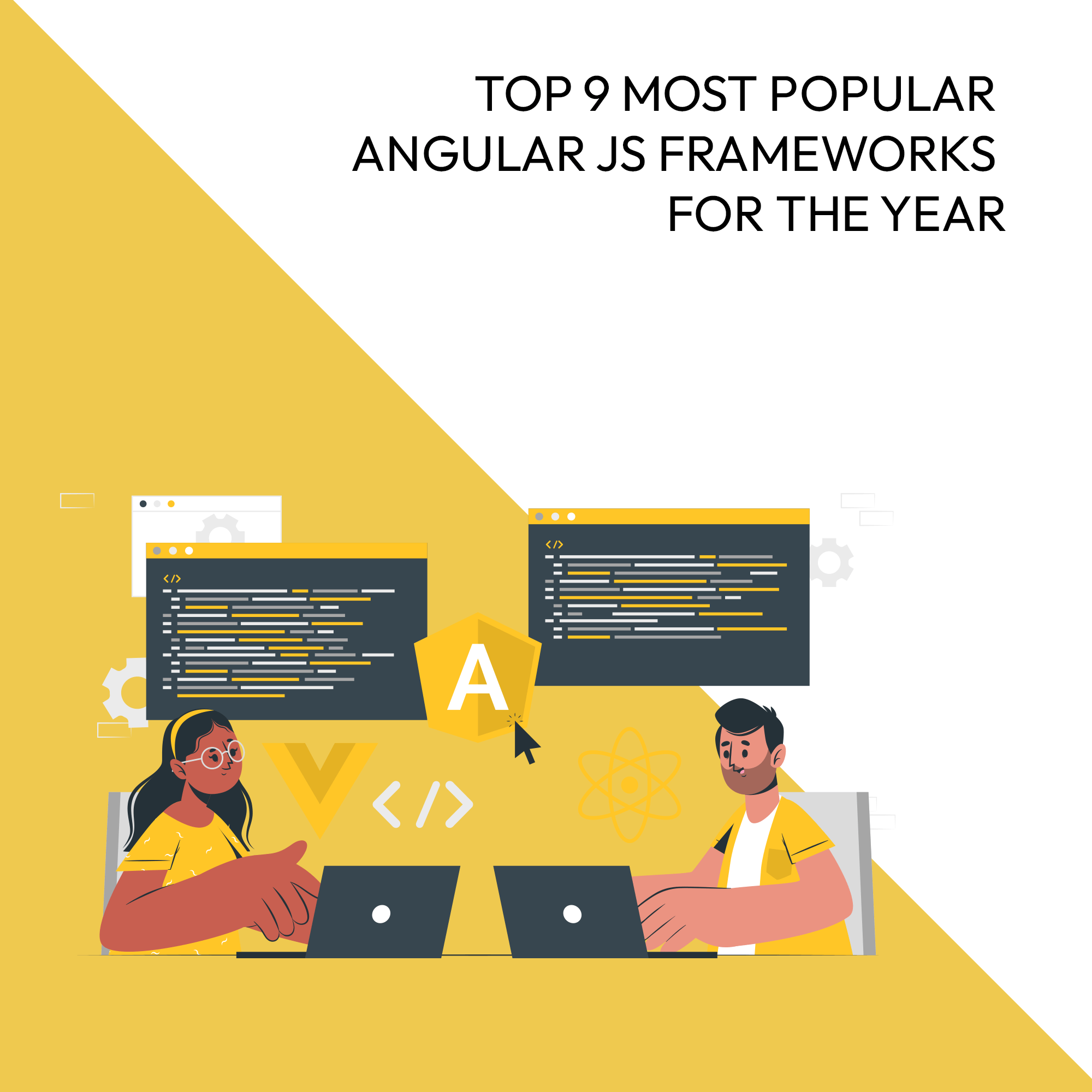What is Angular JS Framework?
Angular, also known as Angular JS, is a framework based on JavaScript (JS). Each year, the most popular ones are listed for the benefit of the users. A team of Google released the first version of Angular JS Framework in 2010. Collaboration with the individual developers has maintained the tradition of periodically updating and releasing new versions. The latest version is Angular 11. It was released in November 2020.
Angular JS Frameworks are well-maintained and best-documented. It is beneficial to all kinds of businesses, be it a startup or big corporate.
Reasons for its Popularity
By making small changes to the code, you can quickly bring improvement in their performance. You can also incorporate some new features into the existing ones. For that, you have to have a better understanding of the frameworks.
Advantages:
- Real-time testing of the app
- Two-way data binding
- Supporting parallel development
- Simplified MVC pattern
- Faster loading
- Speed and performance
- Heavy applications for a single page
- Development of fronted of the websites
The following are the top 9 Popular Angular JS Framework for Review!
1: Ionic:
For Angular JS Web App Development, if you intend to improve the scalability of your code, Ionic is your best option. You can use it for hybrid mobile applications. It runs fast on the latest mobile devices. Although the footprint is small, it is built-in with hardware accelerated transitions, pre-rendering, touch-optimized gestures, and AOT compiling.
You can choose native device plugins for accessing Geolocation, Camera, Bluetooth, and many more. If needed, you can go directly into native SDK. Over 200 countries around the globe are using Ionic for powering their app development.
2: Mobile Angular UI
This open-source framework is used for developing hybrid mobile apps and is. It uses Angular JS and Twitter Bootstrap for creating HTML 5 Hybrid mobile and desktop apps. The components are listed below:
- Navbars are used to display the header section: Footer section or the menu bars.
- Scrollable-header and scrollable-footer are developed by adding CSS classes that take care of the positioning and height of the header and footer.
- Dropdowns
- Accordion hides and opens the following section to view the contents
3: Vue.js
Evan You created this framework. It is an open-source model JavaScript framework. It builds single-page applications and a user interface (UI). It features adaptable architecture for component composition and declarative rendering. Advanced features are state management, routing, and build tooling.
It permits HTML attributes that are known as directives. They offer functionality to HTML applications. Vue was first released on August 5, 2021, under the title Quintessential Quintuplets. The first version was 3.2. The latest version is 0.6, released on December 6, 2013, under the title Vue JS.
4: React-by-fronted developer
It is backed by Angular JS Development Company such as Facebook. It is popular frontend development Java-Script library and not a framework. It is component-based. The library puts the HTML code within JavaScript for enabling it to work with Virtual DOM. For visiting the official site of React, you can click on Reactjs.org. Reasons to use React development framework:
- You can learn it easily
- It has rich user-interfaces
- You can develop it faster
- Reputed companies trust it
- It is the current trend
- It has the strong support of the community
5: Angular UI Bootstrap:
It is an open-source CSS framework. It is based on JavaScript. It is a web developer for mobile-first frontend. The design encompasses templates for typography, navigation, buttons, forms, and other interface components. It is the 10th most starred project in August 2021 on Git Hub. Subsequently, four more versions were released, Bootstrap 5 being released in May 2021. It was titled Twitter Blueprint earlier and was developed by Mark Otto for encouraging consistency across internal tools.
6: Radian
It is developed by being fronted by Angular. Radian is a JavaScript library. It is open source and can make straightforward embed plots in documents of HTM. It was developed by Bayes Hive of Open Brain. You use HTML elements for representing plots instead of writing the Java Script. It binds the attributes of JavaScript variables and HTML elements. It is extensively used in the platform of Bayesian statistics. Let’s understand the major features listed below:
- Ease of using data-based and functional plots
- No need of writing JS
- Integration with Angular JS for complicated actions.
- Supports points, lines, bar charts, and area plots.
- Comprehensive documentation.
7: Angular Material
Angular is a framework to develop a single-page web application by using HTML or TypeScript. That can be imported into your web apps. Google invented a design language in 2014. After removing JavaScript, Google christened it Angular in 2016. It wrote its code from scratches.
Then Google stamped material design to Angular. Finally, it was named Angular Material and used TypeScript as its language. The UX/UX components are termed Angular materials. Let’s understand the major features:
- Inbuilt responsive design
- CSS with least footprint
- New versions of text fields and buttons
- Cross-browser
- Enhanced features such as speed dial, toolbar, side nav, and cards.
8: Mean IO
MEAN is of Mongo, Express, Angular Node. It was introduced in 2013 by Valeri Karpov. It resembled the traditional framework with the acronym LAMP. Amos Haviv, a software developer from Israel, first coined the idea of MEAN io. MEAN js is deduced from Mean io. The former is a backend framework, and the latter is a frontend framework. MEAN io has self-contained node packages, whereas MEAN js has.
9: Protractor
Angular JS Development Company suggests that once the codes are put in and the website is developed, it needs to be tested for its performance. The testing is done while your application is in operation in a real browser, interacting with it just as a user interacts. Protractor is an end-to-end Test Framework for Angular JS applications. It makes use of native events and drivers that are specific to the browser.

